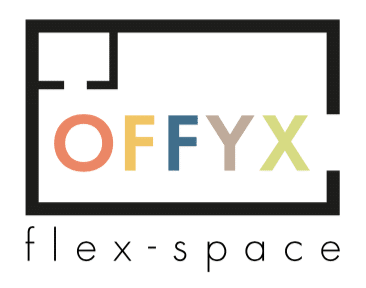Office spaces have been undergoing major changes in the past few years. Today, more individuals are choosing to start businesses, work remotely, and more. Companies are also changing the way they work, with fewer people in the office at one time, creating office hubs, and more. So, how can you determine if a serviced office or coworking is right for your business?
While coworking spaces and serviced offices share some similarities, they provide different types of workspaces, leases, and more. We’ll start by defining what these types of workspaces are and then review their differences and similarities, as well as their pros and cons.
What is a Serviced Office?
A serviced office is a private office space with a flexible lease and an all-inclusive monthly fee. The lease may be short- or long-term, depending on the provider. The space is also fully furnished, and in some cases, maybe customised to a company’s specifications.
The serviced office also includes a wide range of amenities, which are covered by the all-inclusive fee. Amenities can include access to breakout spaces, stocked kitchens, a network & Internet, an onsite gym & shower, free parking, and much more. Each of these perks is extremely valuable for a company, which makes choosing a serviced office a cost-effective solution.
Many of the bills and other services that go with a traditional office are all covered in a serviced office. The workspace includes access to office equipment, reception services, and more.
What is a Coworking Space?
A coworking space is another type of flexible office space. The spaces include a flexible lease, including different membership tiers, an all-inclusive monthly fee, and access to amenities. Coworking spaces are workspaces where individuals or teams can work together. What’s more, these spaces are designed to provide a collaborative environment where everyone works together. But it goes beyond that.
Many coworking space providers also sponsor networking, learning, and other events. These networking opportunities are meant for the provider’s members. The events are geared to allowing those who use the coworking space to meet one another. The result may be in new clients or partners, meeting a mentor, and more.
Coworking spaces also come with the same amenities offered with serviced offices. The valuable perks include furniture, access to office equipment, and the other amenities the facility offers.
As you can see, serviced offices and coworking spaces are both workspaces, which include plenty of perks with their monthly fee. However, there are some differences to consider before choosing the right space for your business.
Coworking vs. Serviced Offices: Workspace is Different
There are some significant differences to consider when choosing a workspace for your business. For instance, coworking spaces usually have an open-plan layout. This type of layout fosters a collaborative atmosphere and makes sharing amenities easier.
In addition, the coworking space may include some unique features, such as nap rooms, privacy booths, smoothie bars, and more. The space also offers two different types of desks. A “hot desk” is a space where anyone may sit and work, as long as the space is unoccupied. On the other hand, a dedicated desk is a workspace that’s reserved for a single individual. No one else uses that space.
The leases for a coworking space are slightly different, too. The memberships include the choice of a hot desk or a dedicated desk. They also offer the option to choose from a short-term or long-term lease. And you’re free to scale up or down as your business grows.
Serviced offices, on the other hand, are private office suites or may include an entire floor. If you choose an entire floor, the arrangement may be an open office layout; however, your company will be the only one in the space. This is the main difference between a coworking space and a serviced office.
Otherwise, the serviced office includes a flexible lease, with access to all amenities covered by the all-inclusive monthly fee.
Coworking vs. Serviced Office: Design of the Workspace
Because of its collaborative nature, the coworking space usually has a more casual, relaxed feel. The workspace is generally laid out in an open plan. The space itself is generally relatively modern, beautiful and inspires the unique collaborative atmosphere of coworking spaces.
Another factor to keep in mind is that each coworking space will have its own unique culture. For instance, if the space is occupied by tech businesses, the environment is usually very laid back and friendly. On the other hand, the space may be occupied by businesses that are more formal. In that case, the environment may be a little more traditional but still friendly.
Serviced offices are entirely different when it comes to the design of the workspace. These workspaces tend to have a more professional appearance and atmosphere. Serviced offices strongly resemble corporate offices, including the styles and colours used in the spaces. The office design is not geared toward collaboration. Here, everyone works independently most of the time.
In addition, many serviced office providers offer customisation of their spaces. A business may choose to use its branding to decorate the space, for instance. If this service is offered, it’s usually covered by an all-inclusive fee. What’s more, the provider takes care of making all the changes to the space. All changes are made before their client moves in. The client can also specify how the furniture can be arranged. Everything is taken care of by the provider.
Coworking vs. Serviced Office: The Culture of the Workspace
The culture of the workspaces is also very different. For example, coworking spaces are generally preferred by freelancers, entrepreneurs, small businesses, and even larger organisations. The space is usually run by a community manager. The community manager works to bring new people on board, introduce them to others in the space, and help them settle in. The manager may also be in charge of organising networking events.
On the other hand, serviced offices are used by all types and sizes of business. One or more people may occupy the office suite; it depends on the business. Serviced offices are very popular with large corporations, who may use the spaces as office hubs to try out new markets, and more.
Summing It Up
So, how do you decide which type of workspace is best for your business? First, consider the size of space you need, the layout that works best for your company, and then factor in the type of culture your business has.
Serviced offices and coworking spaces provide a cost-effective solution, with flexible leases and valuable amenities. So, it comes down to whether your company needs a more traditional workspace or one that’s more collaborative.



Trackbacks/Pingbacks